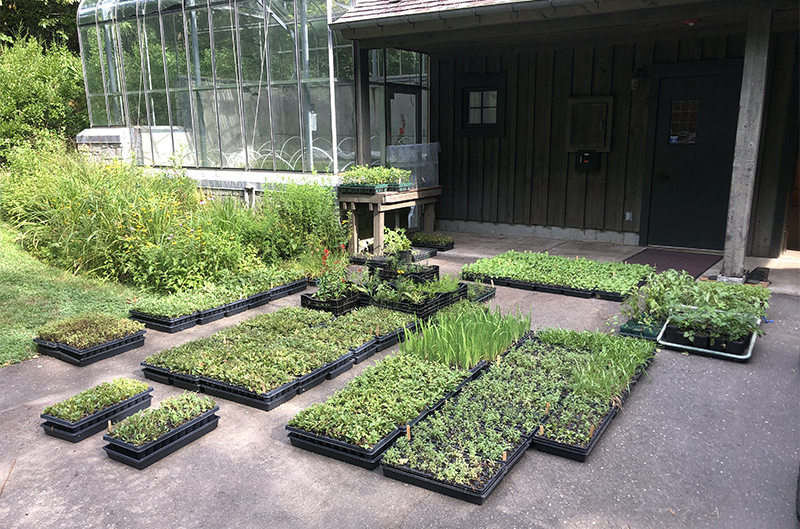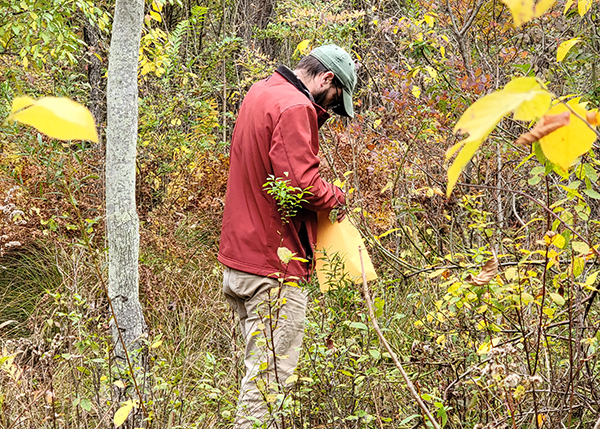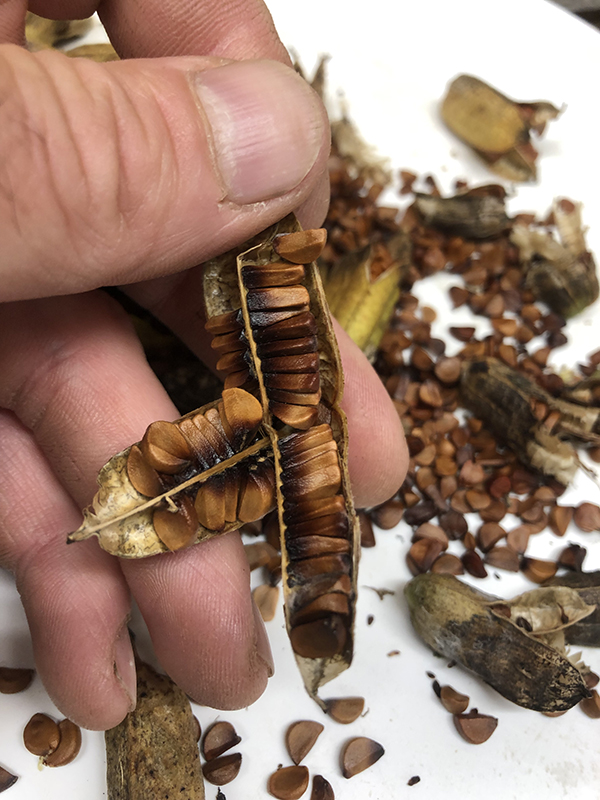
Between the founding of the Pollinator Pathway in 2017, popular entomologist Doug Tallamy’s Homegrown National Park movement, and the rapid growth of reforestation, coastline rehabilitation, urban street planting, and regenerative agriculture, demand for native plants has exploded. Chronic commercial shortages of local “ecotype” seeds, native plants’ offspring possessing genes specific to our Ecoregion 59, posed the greatest barrier to commercial growers’ ability to purchase local ecotypes of native seeds locally, according to a study in the Native Plants Journal Spring 2022 edition. At the root of this native plant and native seed shortage is a dearth of locally adapted seed from sustainably managed sources.
To address this bottleneck in New England, the Native Plant Trust and the Ecological Health Network, with partners including Highstead, Botanic Garden of Smith College, Eco59, Norcross Wildlife Foundation, and the Northeast Organic Farming Association of Connecticut, launched the Northeast Seed Network in March 2023 to grow native plants in seed-producing gardens called seed-increase plots. These seeds will be used in ecological restoration projects and by nurseries to grow plants for sale.

Climate change is causing “mega-disturbances” that create the need for ecological restoration. Pesticide use and habitat loss contributed to drastic declines in European honeybees and native insects and birds. To address these challenges, the past five years have seen growth in large-scale agroforestry and regenerative agriculture, blue-green floodwater infrastructure (a nature-friendly method of managing urban flood risk), and public policy requirements to plant natives on public lands.
Major climate-related events, including massive wildfires, droughts, flooding, extreme temperatures, tornadoes, and other severe weather events reinforce the need to strengthen the nation’s supply of native seed for ecological restoration, according to the National Academies of Science, Engineering, and Medicine. In a summary of the report, An Assessment of Native Seed Needs and the Capacity for Their Supply: Final Report (2023) the authors write, “Millions of acres of public and private land in the United States are at risk of losing the native plant communities that are central to the integrity of ecosystems. As plant communities decline, the biodiversity they embody is also being rapidly lost, along with a wealth of ecosystem goods and services important to society.”
Native plants from a specific “ecoregion” – large areas of similar climate where ecosystems recur in predictable patterns – are essential for biodiversity. For example, native insects that nourish native birds require native host plants on which to lay their eggs. An ecoregion contains many distinctive habitats characterized by natural landforms, climate, species, and ecological communities.
Northeast Seed Network
In 2020, when Native Plant Trust (NPT) staff assessed its seed production needs for the future, the staff identified a strong uptick in the need for plants and genetically diverse native seeds to grow them. Through discussions with other regional organizations about seed scarcity and how to fill gaps in the supply chain, others expressed an overwhelming preference for local “ecotype” native seeds. In 2022, NPT gathered stakeholders for a virtual symposium to devise a strategy to expand native seed supply in the Northeast. This catalyzed a regionwide initiative to address the need for a coordinated seed-increase program, education, training, and support, and engagement with stakeholders who use native seed.

NPT and its partners formed the Northeast Seed Network, which is structured with a hub and spoke design, with the NPT serving as the hub and playing a coordinating role across the region. Smaller collaborations work locally. They’re building a network across all the key seed and plant material supply chain players to increase the accessibility of genetically diverse, source-identified wild seeds and plants for the northeastern U.S. ecoregions.
Collaborations and partnerships are essential to meeting the Northeast Seed Network’s goals, says Uli Lorimer, director of horticulture with the Native Plant Trust. “It’s a pretty huge task. There’s no single organization that is suited to tackling it alone.”
Unlike in other parts of the country, the Northeast has a relatively small percentage of federal land, he says. The Northeast has a patchwork of many more small stakeholders, such as state and municipal parks, land trusts, and private landowners, he says, which makes collaboration necessary.
“Having Highstead be part of this work is helpful because of its proven track record with Regional Conservation Partnerships. Highstead has a lot of experience with working with different partners and stakeholders and achieving a greater mission than even one organization can hope to achieve,” Lorimer says. “They know how to build these kinds of networks. Highstead has the experience of interfacing with state agencies and nonprofit groups.”
The Ecotype Project
At the local scale in southwest Connecticut, native seed work is being done by a smaller collaboration called the Ecotype Project. Highstead serves as a lead partner along with The Hickories Farm, Northeast Organic Farming Association of Connecticut, and local farmers and nurseries. Each partner plays a niche role in the development of the native seed supply chain.
Highstead’s role is in identifying, collecting, and experimenting with growing techniques. As one of the partner organizations, Highstead staff harvests seed sustainably from local, naturally occurring populations, cleans and stratifies them, and grows plugs that can then be distributed to local farmers.

At Highstead, staff works with their land trust partners to identify naturally occurring populations of native plants that are suitable for seed collecting. Sites are recorded and plants are monitored to determine when the seed is ripe and ready to harvest. After harvesting, the seeds are cleaned, labeled, and stored in a refrigerator for stratification, then planted in seed trays containing 72 plugs, and grown in the greenhouse. The staff at Highstead keeps detailed records and shares that information with growers, helping them understand how to grow new and unfamiliar crops.
Farmers plant the plugs out in their fields as seed-increase plots, where seeds can be harvested in the future to meet the needs of land trusts, nurseries, government agencies, and universities involved in landscape restoration or native plants. As the network grows, seeds and plants increasingly become available. Currently, seeds are available by mail through Eco59.com, and people in the landscape trade may purchase plants wholesale through Planters’ Choice Nursery in Newtown, Connecticut.